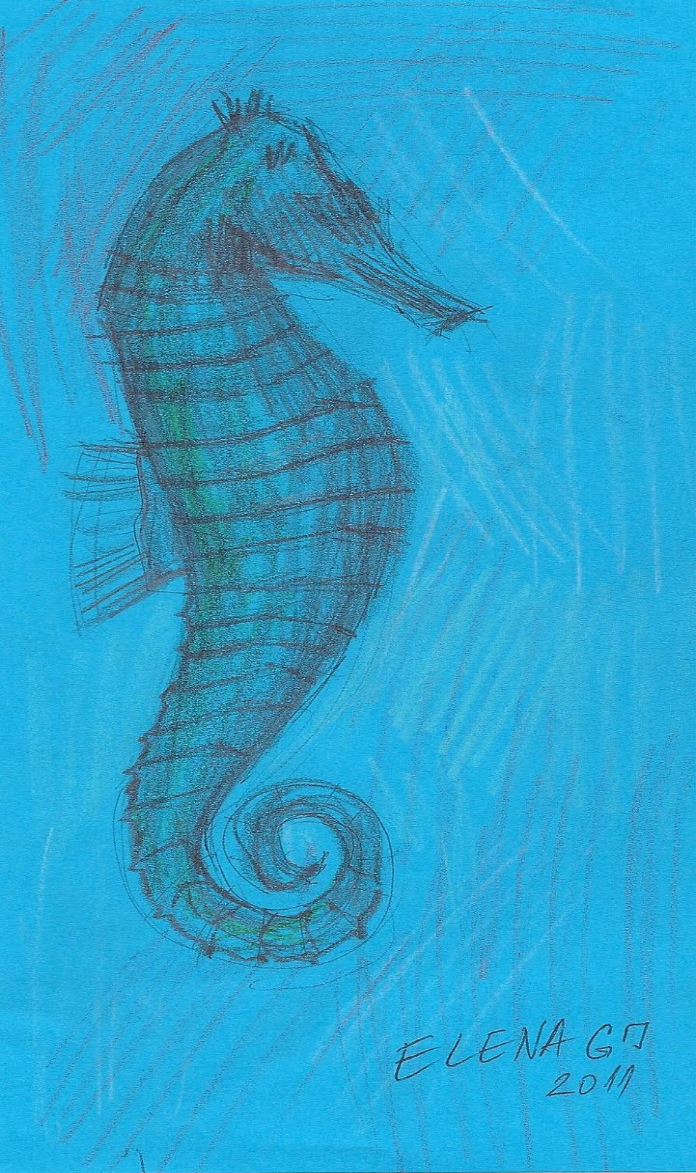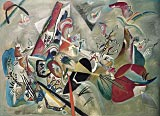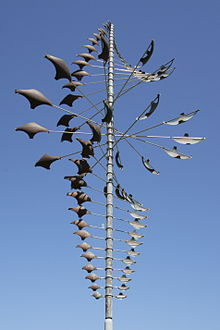Introduction
This piece of work is a development to explore drawing (from 2D to 3D) making using of or not using paper. It is a project that has been segmented in three vital sections that have attempted the x-ray the antiquities of drawing as a visual language.
The work is presented, first through sketches of a series of line drawings – which are considered to be the fundamental starting point to developing appropriate 3- dimensional wire figures. A piece of drawing that uses wire makes use of metallic wire in conveying or presenting a figure, in this case, a seahorse.
The element of the initially developed wire drawing is then re-developed into a large-scale figurative concept. Aluminum has also been employed in the definition of the sketched object to present the concept of 3D entirely, as well as enhance the esthetics of the drawing.
In Part 1 of the project, the seahorse is selected by making a series of line-drawing with the use of pens and ink – consideration is given to outlining, contour lines, and gestural lines. The idea is to convey the ‘essence’ of the sketched structure through a projection of its inherent characteristics. Part 2 of the paper approaches the drawing through the use of hand tools, thereby enabling the 3D projection of the wire figure. Part 3 takes a close look at the initial wire drawing for the benefit of developing the same linearly on a bigger scale. The presented 3D stature would best be standing on a platform at eye level to retain the real size when viewed.
Aim
The aim of this piece of work is:
- To utilize the knowledge and skill of drawing as a starting point for the development and articulation of ideas into three dimensions;
- To learn various methods of working with wire using hand tools;
- To consider the presentation of a 3D artwork; and
- To promote the familiarity of the individual with the content and context of past and contemporary art forms and the language and terms used to discuss them.
The paper also dwells on a research task aimed at deepening the individual’s general knowledge of creative arts. The figure below shows the development of a 3-D effect:

Plate 1 shows a seahorse that sketched by making a series of line-drawing with the use of a pen. Plate 2 presets the 3D projection of the wire figure, and Plate 3 presents the development of 3D projection of the wire figure linearly on a bigger scale.



Research Tasks
The following terms are studied:
Abstraction, Abstract Art
This form of art is a departure from the usual accuracy of representation, which is customary of ordinary artworks. The reason for the departure is usually not related to verisimilitude. Works of art are developed from a careful selection and exaggeration of simplified forms of works based mostly on intuition. Artists who are most identified with these types of works include Pablo Picasso (he was a Spanish and lived with the period 1881-1973) and Georges Braque (a French artist who lived within the period 1882-1963).
Nilson has identified other works to include ‘sculptures of Henry Moore (English, 1898-1987), Barbara Hepworth (English, 1903-1975), and Jacques Lipchitz (Russian-American, 1891-1973)’ (Nilson, 2010, p.46). Wassily Kandinsky, a Russian who lived within the period 1866-1944) is credited with the earliest abstract art pieces. An example of a piece of abstract work by Wassily, which made use of oil on canvas has been seen in plate 4 below:

Constructivism, Constructivist
This presents a theoretical argument supporting the ability of individuals to develop knowledge/meaning from experiences/ideas. Piaget has been known to be a great contributor to the constructivism – which he coined as schemata.
Conceptual Art
This could be said to be a form of art that is temporarily represented. According to Robert, the works are such that ‘a specific concept or idea, often personal, complex and inclusive, takes shape in an abstract, nonconforming manner, based upon a negation of aesthetic principles’ (Robert, 1994, p.122).
Conceptual Art
This has been defined by Luci as, ‘art in which the concept(s) or idea(s) involved in the work take precedence over traditional aesthetic and material concerns’ (Luci, 1997, p. 17). A majority of these art pieces, often known as Sol LeWitt installations – in honor of the initiator, are usually easy to construct and any individual could develop them from step-by-step procedures.
Kinetic Art
This art pieces are designed and developed with parts that are capable of exhibiting motion. According to Gregory, ‘the moving parts are generally powered by wind, a motor or the observer’ (Gregory, 1973, p.78). Gregory has also noted that, ‘Kinetic art encompasses a wide variety of overlapping techniques and styles’ (Gregory, 1973, p.79). Plate 5 presents an example:

Minimalism
The description of minimalism involves, ‘describes movements in various forms of art and design, especially visual art and music, where the work is set out to expose the essence, essentials or identity of a subject through eliminating all non-essential forms, features or concepts’ (Tobias & Duffy, 2009, p.40). The art works are know to have been developed after the second World War, and were basically classified as western – particularly been lined with the visual arts of 1960s/1070s in the United States. Some of the most renowned names associate with the works are noted by Alexander & Blake to include, ‘Donald Judd, John McCracken, Agnes Martin, Dan Flavin, Robert Morris, Anne Truitt, and Frank Stella’ (Alexander & Blake, 1999, p.142).
This section studies an artist that was studied in class; it also attempts to explore a selection of works made by the artist by looking at his drawings as well as his 3D/sculpture/installation work, as well as the personal lifestyle of the artists.
The consider artists is:
Alexander Calder: This renowned United States citizen who invented mobile-sculptures (having also worked intensively on lithographs and tapestry) was born on the 22nd of July in 1898 and lived until the 11th of November in 1976. The arts’ 1st exhibition was presented in 1928 at the Weyhe-Gallery in New York – subsequently in 1933 he also presented an exhibition engaging the Abstraction-Creation group in Paris. Calder, in 1958, was given an award for his sculptural works at Pittsburgh International (Gregory, 1973, p.57)
Conclusion
This paper presents an exploration on drawing (from 2D to 3D) making using or not making use of paper. The student carried out a project that was segmented in three vital sections which attempted to the x-ray the antiquities of drawing as a visual language. The sketches of a seahorse was achieved stage-by-stage using series of line drawings – which were considered to be the fundamental starting point to developing appropriate 3- dimensional wire figures.
In Part 1 of the project, the seahorse, as an object for sketching, was selected by making series of line-drawing with the use of a pen – consideration was given to outlining, contour lines, and gestural lines. The idea was to convey the ‘essence’ of the sketched structure through a projection of its inherent characteristics.
Reference List
Alexander, A., & Blake, S. (Eds.). (1999). Conceptual Art: A Critical Anthology, Cambridge, Mass., London: MIT Press.
Gregory, B. (Ed.). (1973). Idea Art: A Critical Anthology, New York: E. P. Dutton.
Lucy, R. (1997).Six Years: the Dematerialization of the Art Object From 1966 to 1972. Berkeley: University of California Press.
Nilson, L. (2010). Teaching at Its Best: A Research-Based Resource for College Instructors. San Francisco: John Wiley and Sons.
Robert, C. (1994).Conceptual Art: An American Perspective. London: McFarland.
Tobias, S., & Duffy, T. (2009). Constructivist instruction: Success or failure? New York: Taylor & Francis.